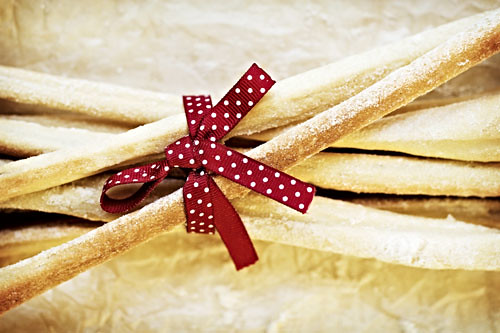
"Focaccia in Bari is prepared by mixing wheat flour, salt, yeast and water. The result is a fairly liquid batter that is poured into a round baking pan, seasoned with olive oil, fresh tomatoes, and olives, and then baked in the oven. And because the mixture is liquid, pieces of tomato and olives sink into the dough, creating and filling small, soft holes, which become the best part of the focaccia. It is eaten warm but not hot, wrapped in a piece of paper, coming out of school, at the beach, for dinner or lunch (or as a snack or even at breakfast, but this is stuff for experts): fast, cheap and deliciously greasy.
Focaccia is one of the best things in the world. I refrain from saying that it is
the best thing, to keep a minimum of perspective and to avoid the parochial ravings. There are the thin and crunchy ones, the tall and soft, those with the addition of potatoes or rosemary and many other variations. But the real focaccia is the one with tomatoes, olives, charred edges and nothing else. It should be paired, if possible, with a nice bottle of very cold beer. If you really want to enter the realm of high cuisine, the supreme pleasure is warm focaccia stuffed with thin slices of mortadella. Mortadella, when sliced thinly, coming into contact with the warm and fragrant crumb, releases a scent that makes the salivary glands go crazy.
Unlike many good things, which are often scarce and expensive, focaccia, in Bari, is found wherever there is a bakery. Which is everywhere, and everybody can buy it.
Focaccia, in Bari, is a metaphor for equality and one of the few symbols (among them, worthy of note are raw mussels) in which people from Bari recognize their collective identity.
A few hours earlier, Paolo had said that what he missed the most was the smell of focaccia".
(G. Carofiglio,
Neither here nor anywhere else, one night in Bari)
Soft Focaccia from Bari
for two round pan of 10" in diameter*
The Starter
type O flour 80 gr
lukewarm water 60 gr
fresh yeast 1 g (a small piece)
The Dough
semolina (durum wheat) flour 1 kg
lukewarm water 800 gr
olive oil 30 gr
fresh yeast 15 gr
salt 20 gr, 4 tablespoons
cherry tomatoes, cut in half 1 kg
black olives, weighted with the pit 400 gr
olive oil for the pans, salt, oregano as needed
Getting hooked on focaccia's recipes - and the one from Bari in particular - is taking a dead end street. Tall, thin, wheat flour, semolina flour, with olives, without olives, with potatoes, without potatoes. Variations are endless; a quick googling is enough to understand that you wouldn't get out of it alive. Especially if you've never been in Bari, if the sea for you has always been only an interlude, and - even worse - if few years ago you moved to the other side of the world, where the Mediterranean and its aromas have become a metaphor of undefined contours.
For this reason, I've decided to rely upon an original recipe signed by the Simili sisters, which - besides being of secure outcome - also frees me of any liability. And there I rewrite it below, exactly as it is recited in the Bible in their book. Roll up your sleeves and knuckle down, because this focaccia, whether or not from Bari, really kicks ass!
The starter:
Mix the ingredients in a bowl, cover and let rise for 18-24 hours.
The dough:
In a large bowl, dissolve the yeast and the starter with half the water, and mix well; add a little flour, salt, and then begin to beat. Combine the remaining ingredients, alternating flour and water and continue beating vigorously until the mixture "boils" (that is, until you see large bubbles forming, that will break immediately) and the texture of the semolina flour is dissolved (about 10-15 minutes). The dough should be very soft. Cover the bowl and let it rise for 30 minutes.
Pour some oil in each of two baking pans, put your hands in covering them completely; grasp half of the dough and roll it while suspended, keeping it in one hand while the other collects the dough that's falling from the side, inserting it underneath in the middle, and transferring everything from one hand to another.
Don't worry if at first the gluten is relaxed and the dough comes down very quickly; after two or three manipulations the gluten wakes up allowing you to work more comfortably for two to three manipulations. Place this ball in the greased pan and repeat with the second half of the dough. Let it rise for about two hours, then cover the surface completely with tomatoes and pitted olives, taking care not to press down, otherwise you lose the rising gas and the focaccia will be less soft. To avoid this unfortunate circumstance, pinch a little dough by lifting it up, then put a piece of tomato or olive underneath. Sprinkle with salt [and oregano, I'd like to add ], drizzle with oil and bake at 450 for 25-30 minutes.
Remove from the pan few minutes after it's baked and place it on a baker's rack.
*I halved the quantity, obtaining one round pan only. I prepared the starter with the quantities described above, but then I used only half of it for the final dough, which I've made with half the quantities transcribed here.














